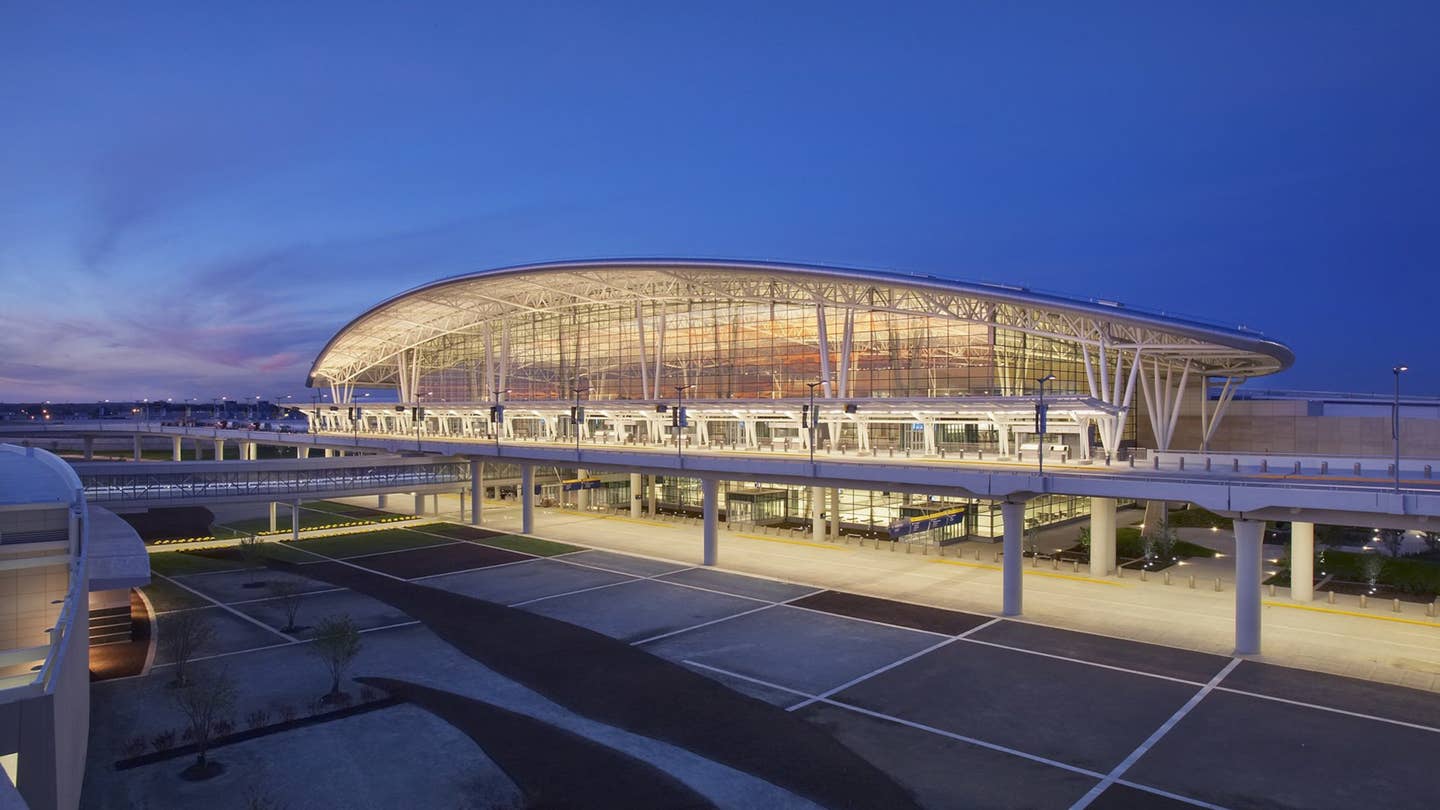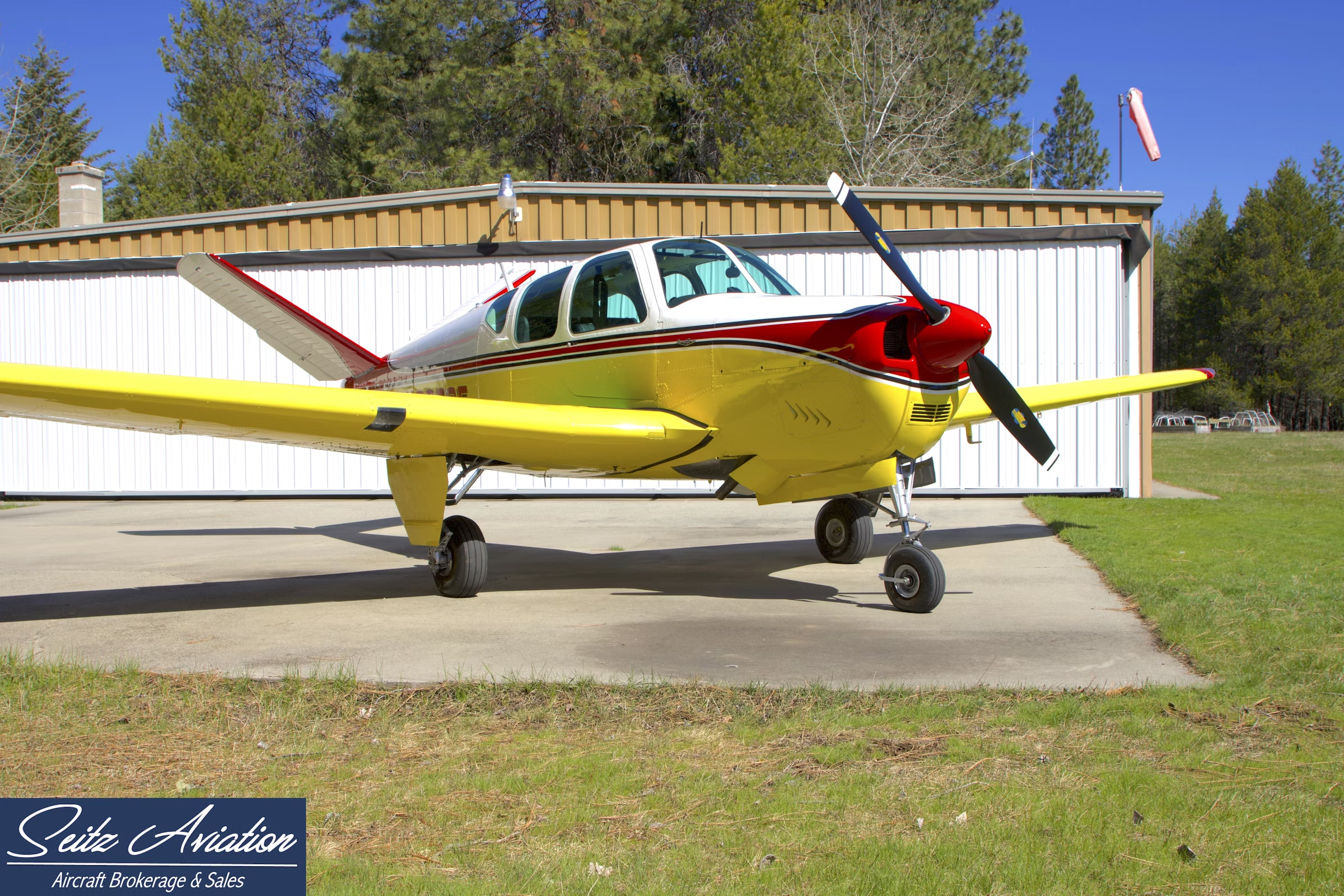FAA Awards $92M for Airport Net-Zero Emission Goals
The funding will go toward solar panels, electric infrastructure like buses and charging stations, and unleaded fuel.

Colonel H. Weir Cook Terminal at Indianapolis International Airport, which received $22.5 million in FAA funding. [Courtesy: HOK]
The U.S. is committed to eliminating aviation emissions by 2050, and airports may be the first part of the industry to decarbonize.
On Tuesday, the FAA announced it has awarded $92 million in grants to 21 airports across the country. The funding will help airports reduce their Scope 1 and 2 emissions by installing solar panels and electric infrastructure (such as buses or charging stations), conducting electrification studies, and transitioning to unleaded fuel for piston-engine aircraft.
The funding is part of the FAA’s Airport Improvement Program (AIP), which will allocate supplemental discretionary grants worth up to $268 million by the end of September 2024. The AIP in turn falls under the agency’s Airport Climate Challenge, a collaboration between itself and U.S. airports to support the Biden administration’s net-zero objectives.
“We need to help airports transition their operations as quickly as possible to renewable power,” said Shannetta R. Griffin, P.E., associate administrator for airports at the FAA. “Our investments keep us on track for the net-zero goal.”
The FAA has already awarded more than $1.5 billion through standard and discretionary AIP grants in 2023—the full list as of June 15 can be found here. But the funding announced Tuesday is intended for specific sustainability projects at specific airports.
Indianapolis International Airport (KIND), for example, received about $22.5 million to build “energy efficient infrastructure” and install solar panels. Phoenix Sky Harbor International Airport (KPHX) received another $20 million to design and build “solar parking structures.”
An additional $4.2 million went to El Paso International Airport (KELP) in Texas, and Southeast Iowa Regional Airport (KBRL), La Porte Municipal Airport (KPPO), Centerville Municipal Airport (KTVK), and Decorah Municipal Airport (KDEH) in Iowa to install solar panels.
The FAA also awarded $44.5 million for airports to purchase electric vehicles, like buses, and electric transportation infrastructure like charging stations. About one-third of that money went to Portland International Airport (KPDX) in Oregon to build infrastructure for zero-emissions vehicles.
The rest of the money was spread across 12 airports, which are expected to spend it on electric buses and other zero-emissions vehicles, as well as chargers.
One airport, Prescott Regional Airport (KPRC) in Arizona, also earned $243,000 to devise a plan to safely transition its piston-engine planes to unleaded fuel.
The AIP grants support the aims of the U.S. Aviation Climate Action Plan, a November 2021 initiative by the FAA supporting the White House’s decree to eliminate aviation emissions by 2050. So far, the program has allocated $100 million to research fuel-saving technologies and noise reduction and $327 million to electrify airport gates and vehicles.
Another $35 million went to universities to help build sustainable aviation fuel (SAF) supply chains and reduce aircraft fuel burn and taxi time. Per the International Air Transport Association, SAF production tripled in 2022, and the White House introduced the SAF Grand Challenge in 2021 to support the production of 3 billion gallons per year by 2030.
According to the FAA, several airports have already reduced emissions significantly, among them Hartsfield-Jackson Atlanta International Airport (KATL), Dallas-Fort Worth International Airport (KDFW), and Denver International Airport (KDEN), the three busiest in the country.
However, aviation still contributed around 2 percent of U.S. greenhouse gas emissions in 2022, which doesn’t sound like much—until you do the math. Per the International Energy Agency, the U.S. emitted 4.7 gigatons of CO2 last year, which means the aviation sector accounted for around 940 million metric tons. That’s equivalent to what a combined 11.8 million homes would produce in a year from energy consumption.
The FAA will continue to award AIP grants through 2024, including via its Voluntary Airport Low Emissions (VALE) and Zero Emissions Vehicle and Infrastructure Pilot (ZEV) programs, which are available to certain airports based on need.

Sign-up for newsletters & special offers!
Get the latest FLYING stories & special offers delivered directly to your inbox






